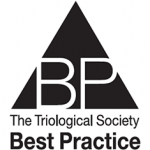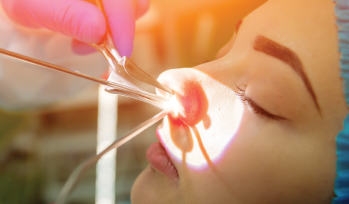 TRIO Best Practice articles are brief, structured reviews designed to provide the busy clinician with a handy outline and reference for day-to-day clinical decision making. The ENTtoday summaries below include the Background and Best Practice sections of the original article. To view the complete Laryngoscope articles free of charge, visit Laryngoscope.
TRIO Best Practice articles are brief, structured reviews designed to provide the busy clinician with a handy outline and reference for day-to-day clinical decision making. The ENTtoday summaries below include the Background and Best Practice sections of the original article. To view the complete Laryngoscope articles free of charge, visit Laryngoscope.
BACKGROUND
Acute invasive fungal rhinosinusitis (AIFRS) is a rapidly progressive and life-threatening condition that predominantly affects immunocompromised patients. Historically, the disease-specific survivorship has been less than 50% at three months; however, more recent studies have found survivorship to approximate 60% over the same time interval (Int Forum Allergy Rhinol. 2018;8:1459-1468). Consequently, early diagnosis is of paramount importance, as it permits timely surgical debridement and administration of systemic antifungal therapy to increase the probability of survival.
The evaluating clinician must have a high degree of suspicion, as AIFRS often presents with nonspecific signs and symptoms. The gold standard for diagnosis is pathologic confirmation of mucosal invasion by fungal organisms within the sinonasal mucosa via biopsy at the bedside or in the operating room. Delays in biopsy may set back treatment and contribute to increased morbidity and mortality (Otolaryngol Head Neck Surg. 2018;159:386-393). Though computed tomography and magnetic resonance imaging can be acquired rapidly, the changes on imaging suggestive of AIFRS may not present until later in the disease course. Visualization of mucosa through bedside nasal endoscopy is frequently used to evaluate for changes including mucosal pallor, crusting, discoloration, and frank necrosis (Clin Otolaryngol. 2021;46:775-781). However, despite the ubiquitous use of bedside nasal endoscopy, the role of routine endoscopically guided nasal biopsy at the bedside has not yet been established.
In consideration of these advances, this report evaluates the role of routine bedside endoscopic nasal biopsy in obtaining a timely and accurate histologic diagnosis of AIFRS.

© Roman Zaiets / shutterstock.com
BEST PRACTICE
The literature indicates that bedside biopsy has high levels of accuracy in the setting of abnormal mucosal targets identified on nasal endoscopy but is also subject to potential false-negative results, particularly in the unoperated patient whose sinuses may harbor occult disease hidden to endoscopy or identified on imaging but inaccessible at the bedside. Optimal diagnostic workup for AIFRS entails the use of 1) clinical signs and symptoms (e.g., pain, fever), 2) nasal endoscopy findings, 3) objective evidence of immunocompromised status (e.g., neutropenia), and 4) imaging findings to stratify patients into low or high clinical suspicion for AIFRS. As demonstrated in the literature, abnormalities in these areas could suggest underlying AIFRS, and suspicion for this diagnosis is unlikely to be allayed by negative results on routine bedside biopsy.
In conclusion, routine bedside biopsy has a limited role in the evaluation of patients with suspected AIFRS, and clinical suspicion should warrant comprehensive sinonasal evaluation and targeted biopsy in the operating room.